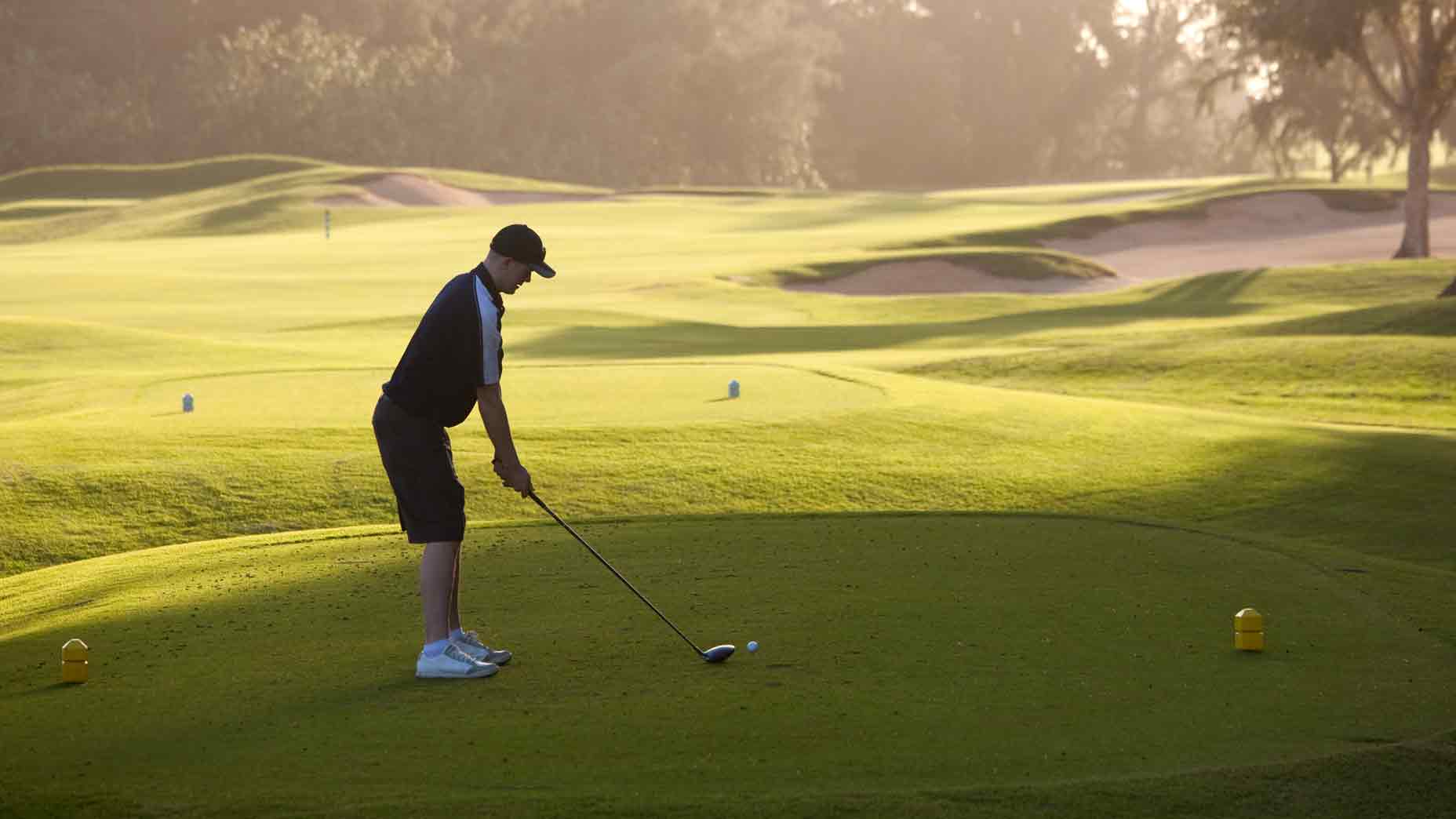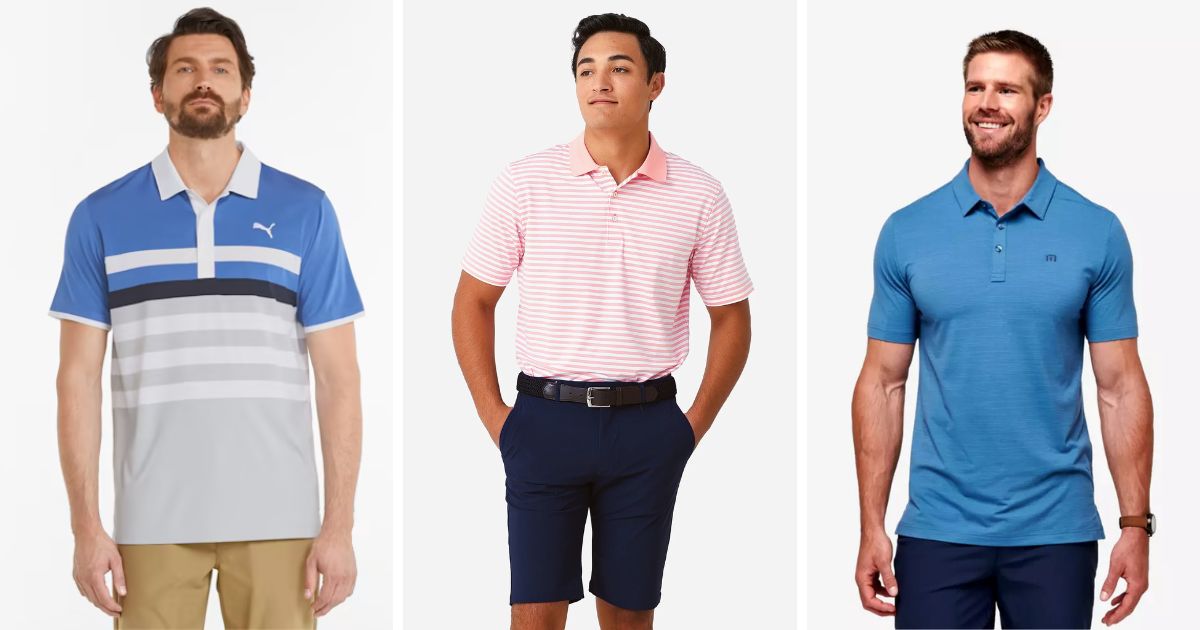Golf is one of the sports with a lot of terminology. To be able to become a golfer with accurate shots, mastering golf terminology is extremely important. One of them is Tee Box. So what is a Tee Box? Let's find out through the article below.
Learn what a tee box is and the types of tee boxes in golf
In golf, a tee box is a defined area from which players begin play on each hole. It is usually a flat, rectangular, or square-shaped area of the golf course that is slightly elevated over the surrounding grass. Tee markers define the boundaries of the area where players can tee off.
Tee box is a term used quite commonly in golf. It is used to refer to the teeing area, which is the starting point of each golf hole. Depending on the length of each golf hole and the designer's idea, Tee Boxes have many different designs and sizes. Each teeing area will be marked with color to show the distance from the Tee Box to the golf hole. Usually it will be from 4 to 6 teeing points.

There are 2 ways to distinguish the types of Tee Boxes based on color and par hole. Players need to understand this information to be able to use the most suitable Tee type. Specifically:
Distinguish by color
Currently, tee boxes are divided into:
- Yellow and Black Tees: This is the Tee Box with the longest distance. Usually for professional golfers or golfers with low Handicap scores.
- Blue Tees: This is the standard Tee for Handicap golfers.
- White Tees: Usually used by new players or those who play golf for fun. Mostly for male golfers.
- Red Tees: Tees exclusively for women.
Based on par holes
Based on the location of par holes, Tee Boxes can be distinguished as follows:
- At Par3 holes: This is where there are the most divots. Because at par 3, golfers often use iron clubs to tee off.
- At Par4 holes: This is where there are the most challenges. For example: Tee boxes placed in the direction of sand traps require golfers to make long shots to overcome the traps.
- At Par 5 holes: The smallest size of the holes, golfers often use wooden clubs or drivers to tee the ball. Therefore, the Tee box holes at par 5 will be designed quite simply.
What is a golf tee? Popular types of golf tees today
Besides the tee box, there is another term that golfers often hear, which is golf tee. Golfers often call it a tee or golf tee. Golf tee is an accessory that helps keep the golf ball still for a more stable shot.
In the past, tees were often made of rubber or plastic. However, with the development of technology, industrial science, tees have been switched to being made from environmentally friendly materials such as: wooden tees, bamboo, biodegradable materials, etc. Each type of tee will have its own characteristics suitable for the terrain and needs of the golfer.
Golf tees also have the effect of lifting the ball higher than the ground to make contact with the grass when hitting the shot. From there, golfers can easily hit the ball and send it further.

Below are the 7 most commonly used golf tees today that you can refer to. Specifically:
- Traditional Tees: This is a type of tee used by many golfers. Usually this type of tee is made of wood or plastic.
- Standard Tees: This is a versatile golf tee with a standard length of 2.125. Golfers can customize it according to their preferences.
- Colorful Tees: Usually used for new golfers or golfers who want to choose a tee according to length. The highlight of this type of tee is that it is quite colorful so that players can distinguish the length more easily.
- Zero Friction Tees: Usually made of plastic and does not have a round cup underneath to hold the ball, but this type of tee will have 3-6 points to replace, helping to fix the ball. In particular, the non-friction tee has the ability to help reduce friction with the ball.
- Pyramid Tees: This is a type of tee suitable for use in winter or on windy days. Because this type of tee is quite sturdy, it can be used on both hard ground or carpet.
- Anti-Slice Tees: Used to hit thin by creating spin from the loft angle of the club.
- Soft bristle Tees: Made of plastic, the tee head is designed with soft bristles to help create the least friction when hitting.
Above is information about tee boxes in golf. Surely by following this, you have got a detailed answer to the question: What is a tee box? Save it to accumulate more knowledge about golf. And don't forget to continue following the next articles of GolfAq for more useful information about this noble sport.
Which Tees Should You Play?
When it comes to selecting which tee box to play from, it’s important to choose wisely in order to maximize enjoyment and scoring potential. As your expert Emily Greenfield, let me break down the many factors to consider.
The obvious starting points are listening to your USGA or PGA handicap recommendations as guidelines. But also pay attention to your average driving distance - a good rule of thumb is to multiply that baby by 28 to estimate the total yardage you can consistently handle.
:max_bytes(150000):strip_icc()/mickelson-tee-markers-1500-56a3d2993df78cf7727f6b74.jpg)
Take into account course difficulty too - things like doglegs, doglegs, water and bunkers factor in. Weather is another variable - add 30 yards if it’s howling or lop off the same if conditions are perfect.
USGA Recommendations
The United States Golf Association (USGA) provides handicap-based guidelines for tee box selection:
|
Handicap |
Recommended Tees |
|
36+ |
Forward |
|
26-35 |
Forward |
|
16-25 |
Middle |
|
5-15 |
Back |
|
0-4 |
Back |
PGA of America Guidelines
The PGA of America offers a more detailed tee box recommendation based on handicap and total yardage:
|
Tee Box |
Handicap Range |
Total Yardage |
|
Black |
Less than 5 |
7,000+ |
|
Blue |
5 - 15 |
6,500-6,999 |
|
White |
15 - 25 |
6,000-6,499 |
|
Red |
25+ |
5,000-5,999 |
Personal preference matters. Some folks like mixing it up shot-for-shot from the tips regardless of ability. But if you’re just looking for a good walk with less stress on the scorecard, move it up!
And don’t overlook initiatives like Tee It Forward. Stepping to a closer set of boxes allows you to work on approaches and be involved in more holes - building confidence over time as your game improves.
Methods for Selecting Tees
Figuring out which set of tee boxes to play from can sometimes be more complex than we wish. But as your golf gear guru David Lee, let me share two no-fail techniques to instantly estimate your ideal course length.
First is the driving distance method. Simply take your average max drive and divide it by 28. This will give you a solid ballpark of the total yardage your full arsenal can contend with.
For instance, if you normally smash your driver 240 yards, just divide that by 28 and - bingo! - you get 8,580 yards worth of course to handle. White tees, here we come.
Second is using your trusty 5-iron. We all know the distance we can count on from that mid-metal. Well just multiple that yardage by 36 and you've got an accurate picture.
Maybe your 5-iron stays true at 175 yards. Just multiple 175 x 36 and you get 6,300 yards. Again, white or red tees should be a piece of cake.








.jpg)
.jpg)
.png)





